 |
|
There are seven popular food crops in this picture
|
“The switch from growth to decline in oil production will thus almost certainly create economic and political tension.”
…click on the above link to read the rest of the article…
News and views on the coming collapse
Home » Posts tagged 'food' (Page 8)
Over the past few months, my husband and I have kept an eye on the store shelves in our area. We don’t shop daily or even weekly, but the trend of increasingly bare shelves has been incredibly disturbing. This made me curious as to what others have been experiencing. As a member of various online prepping communities, I see a lot of conversations and concerns, but one thing that has stood out to me is the amazing number of people chiming in to report sparse or bare shelves or just not being able to find a specific item they like.
We visited many different stores.
Over several months we visited various regional and national grocery stores, drug stores, and dollar store chains.
You may be able to guess where these pictures come from but I am not going to mention store names because I fear that by doing so I will contribute to a damaged reputation for these stores. I don’t want to affect the financial well being of the hardworking families that rely on their employment with these stores.
The main grocery warehouse for a major regional chain is quite close, and they are a well-capitalized company with no significant financial difficulties, but even they seemed to have problems keeping some items on the shelf.
Here are the most commonly out of stock or in short supply items.
The pictures in this article were not taken during snowstorms. They were taken during a typical shopping day in the winter time in the USA. My husband and I wanted to make sure that snow was not making the results worse than they actually are. This research is intended to inform, not foster unwarranted fears.
…click on the above link to read the rest of the article…

Dr. D:
Eat less meat to save the planet – report (1)
The new diet that could save the planet (2)
What to eat to save the planet: Report urges ‘radical changes’ to world’s diet – less meat, more veggies (3)
These headlines, likely sourced from a recent article from “The Lancet” (4) are a regular feature of our time, in diet, in environmentalism, and in global warming. They are well-researched, sourced by the world’s experts, and put forward with the highest intentions. However, they are also completely wrong – dangerously, ignorantly wrong.
Like most industries, agriculture and food production is a specialty, with its own language and details. I don’t attempt to tell the Lancet how to perform heart surgery, for to do so would be ridiculous, dangerous, outside of my expertise. I wouldn’t tell a geologist how to interpret the magnetic layers of rock, or how oceanographers should properly interpret sea water samples to guide us on fishing or pollution. Yet this is what they do for farmers.
The primary drive of most such articles is that, with so many people, and so much hunger, we find that it takes “2,500 gallons of water, 12 pounds of grain, 35 pounds of topsoil and the energy equivalent of one gallon of gasoline to produce one pound of feedlot beef.” that “64% of US cropland produces livestock feed.” (5) That it takes “20 pounds corn [to make] 1 pound beef.” (6) Or that you can get 15lbs of beef per acre, but 263lbs of soybeans. (7) Also that cattle are the primary reason for deforestation, and a major cause of methane.
…click on the above link to read the rest of the article…

Potatoes on the wing – and thin pickings for all as UK crops wilt. Image: By Lucas Sankey on Unsplash
Britons’ familiar and well-loved fish and chips could become scarcer as politics and climate change imperil UK vegetable and fruit supplies.
LONDON, 5 February, 2019 − A combination of Brexit − Britain’s move to leave the European Union − and climate change is threatening UK vegetable and fruit supplies for its 66 million people.
Brexit-associated delays at ports could result in widespread shortages of a range of imported vegetables and fruit such as lettuces and tomatoes, particularly if the UK crashes out of Europe at the end of March this year with no deal in place.
Now there’s more bad news on the British food front; a just-released report says climate change and resulting abnormal weather conditions are causing significant decreases in the UK’s own vegetable and fruit harvests.
The study, produced by the Climate Coalition in association with the Priestley International Centre for Climate at the University of Leeds in the UK, says about 60% of food consumed in Britain is domestically produced.
The unusually warm summer in 2018 – the hottest ever in England since records began in 1910, according to the report – led to a drop in the onion harvest of 40% and a decline of between 25% and 30% in the carrot crop.
In 2017 the UK’s apple growers lost 25% of their produce due to unseasonably warm weather followed by an unusually late series of frosts.
“It’s really hard work growing fruit and vegetables, but erratic and extreme weather pushes you over the edge”
The study says climate change-related extreme and unpredictable weather is putting at risk future supplies of potatoes – a staple of the British diet.
“The UK could lose almost three-quarters of the area of land currently well-suited for potatoes by the 2050s under climate projections”, says the report.
…click on the above link to read the rest of the article…
Scientists say our diets must evolve. Canada could lead the way.
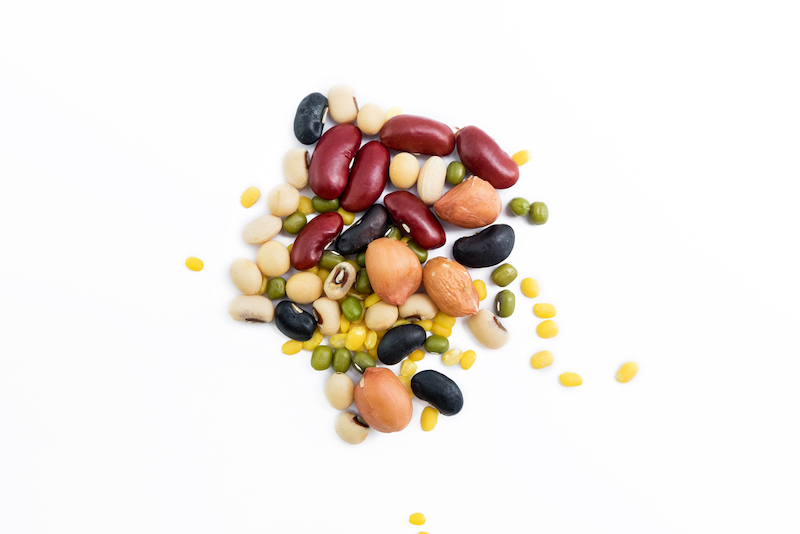
Adding a vice to a culture is always easier than removing it. Consider, as examples, alcohol, tobacco, marijuana, and the hamburger. Despite all we know about the harm we do to ourselves and others by indulging in these vices, we persist in them.
Now, however, Canada is facing serious pressure to scale back on one of those vices — the hamburger and the whole spectrum of red meat. We can expect pushback from beef producers in Alberta and elsewhere, but we may also find powerful support from most Canadian farmers. That’s because Canadian agriculture can play a decisive part in improving global health, saving lives, and slowing climate change — while enriching our farmers.
The pressure comes from a new report by the EAT-Lancet “Commission on healthy diets from sustainable food systems,” published in the British medical journal The Lancet. Titled Food in the Anthropocene, the commission report argues that we’ve been digging our own graves with our unsustainable gluttony, and only making matters worse for the climate and the environment.
Right now, the report says, “more than 820 million people have insufficient food and many more consume an unhealthy diet that contributes to premature death and morbidity.” And to produce this dreadful food we are damaging or destroying local ecosystems and threatening the Earth system itself.
By 2050, 10 billion of us will be on the planet, enduring an ever-increasing burden of non-communicable diseases like diabetes and heart disease, while greenhouse-gas emissions increase and agricultural production suffers from nitrogen and phosphorus pollution and scarcity of clean water. Switching to healthy diets would have dramatic benefits, starting with the saving of about 11 million lives a year. That’s 30,000 people a day, or 1,255 an hour.
…click on the above link to read the rest of the article…
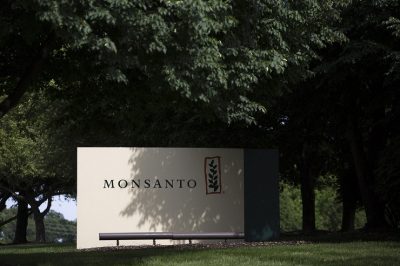
Not surprising, Monsanto, today hidden behind the Bayer logo, as the world leader in patented GMO seeds and the probable carcinogenic Roundup herbicide with glyphosate, is attempting to quietly patent genetically modified or GMO varieties of fruits using controversial gene-editing. The “beauty” of this for Monsanto/Bayer is that in the USA, according to a recent ruling by the US Department of Agriculture, gene-edited agriculture needs no special independent testing. The developments are not good for human health or safety, nor will it do anything to give the world better nutrition.
The agrichemical and GMO giant Monsanto, which today tries to keep a lower profile inside the German agrichemical and GMO giant Bayer, is moving into the highly controversial domain of gene-editing of new crop varieties. In 2018 as the company was being deluged with lawsuits over its use of the probable carcinogen, Roundup, Monsanto invested $125 million in a gene-editing startup called Pairwise. The link is anything but casual.
Former Monsanto Vice President for Global Biotechnology, Tom Adams, has taken the post of CEO of Pairwise. In short, this is a Monsanto gene-editing project. In a press release, Pairwise says it is using the controversial CRISPR gene-editing technology to create genetically edited produce. Among their goals apparently is a super-sweet variety of strawberry or apples, just what our sugar-saturated population doesn’t need.
CRISPR gene-editing, a stealth attempt by the global agribusiness industry to promote artificial mutations of crops and, as the world was shocked recently to hear, even humans, as in China, is being advanced, much like GMO crops falsely were, as solution to world hunger.
…click on the above link to read the rest of the article…
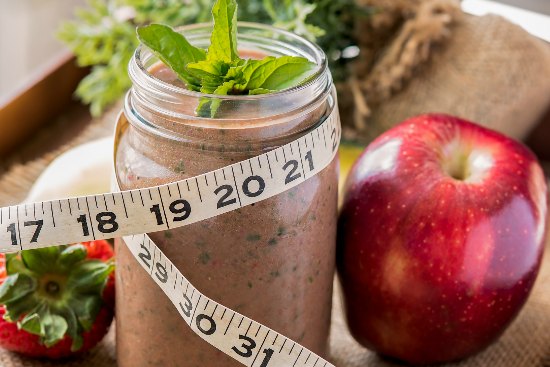
Ready Nutrition guys and gals, let it never be said that I under-emphasize weight training and physical conditioning. I believe it to be the centerpiece of keeping yourself in good health both physically and mentally. That being said, you need to give yourself an “edge” in your training. Train intelligently and with purpose, and you will garner significant results. Nutrition is the cornerstone of proper training. That being mentioned, we’re going to cover pre-loads in terms of both supplements and “standard” foods that will help you prior to a workout.
Everyone varies, and everybody is different. In the morning, I can’t stand to eat anything just before I lift. The food never sits well in my stomach. My pre-load comes the night before, in the form of high protein and ample carbohydrates. Let’s discuss this. Your body will digest the food slowly from the night before…especially if you eat very late at night, such as 10 pm or later. I like to finish up my meal about 7 pm if possible.
I stack up the high protein, and medium to high carbohydrates, the latter in the form of potatoes or pasta. I prefer the potatoes: they are more readily-absorbable and digestible for your system. The carbs and proteins provide energy and tissue repair, in that order. They “fortify” you by giving you a load of energy to work with after you arise in the morning. This may not sound important, but it is. Breakfast is the most important meal of the day, but it does not detract from the fact that they’re all important.
…click on the above link to read the rest of the article…
There are all sorts of situations that can have you eating from your stockpile for a month or so. Maybe you have an unexpected expense that means a weekly trip to the store is out of the question. Maybe there’s a problem with the local transportation and deliveries aren’t making it to your area. Maybe your car broke down and there’s nothing within walking distance.
Whatever the reason, eating from your stockpile does not have to be boring and unpleasant. If it’s nonstop beans and rice, you’re doing something wrong.
What to stock up on
First, you should be stocking things you genuinely enjoy – and things that are similar to how you already eat. If you suddenly switch to nothing but buckets of food with ultra-carby, low protein offerings, you are going to be a) bored and b) lethargic.
At the same time, for most of us, the food we stock up on for the longer term will not be exactly the same. We live in a world where most of us can have fresh produce, meat from the butcher shop, and a gallon of milk whenever we want it.
So when you build a stockpile, it’s important to realize that while you can make it similar, it’s not going to be exactly the same.
Our stockpile relies on freeze-dried and canned meats, freeze-dried and canned veggies, grains, and loads of spices and seasonings.
Here’s a guide to eating from your stockpile for a month
I wrote a book called The Stockpile Cafe about eating from your pantry for a month with no fresh ingredients. It’s got menus for 7 dinners per week, along with serving suggestions and a shopping list. There are some ideas for thrifty stockpile breakfasts and lunches, too.
You can buy it here for $6.49: https://sowl.co/fgXTA
…click on the above link to read the rest of the article…

As I prepare for a winter of writing I’m looking around at the books on our shelves and seeing that many of the books that inspired us to get us started with our project are from authors published by Permanent Publications. So after a little deliberation on whether or not I should do a cheesy 10 top blog, here it is. I should really be spending this time writing the book, but I can’t help but to write this post as a small token of my appreciation and respect to all the incredible authors and people at work, and to Permanent Publications for facilitating the dispersal of so much wonderful and useful knowledge. So here is my top 10 books that have inspired our project.
The order does not denote how good I think the books are, it’s more based around the order I read the books.
1 – THE PERMACULTURE GARDEN – LINDA WINDROW
Top of the list and the book that got me in and going with our project is by the ingenious, wonderfully pragmatic and endlessly enthusiastic Linda Windrow – The Permaculture Garden.

…click on the above link to read the rest of the article…
 |
|
There are seven popular food crops in this picture
|
“The switch from growth to decline in oil production will thus almost certainly create economic and political tension.”
…click on the above link to read the rest of the article…
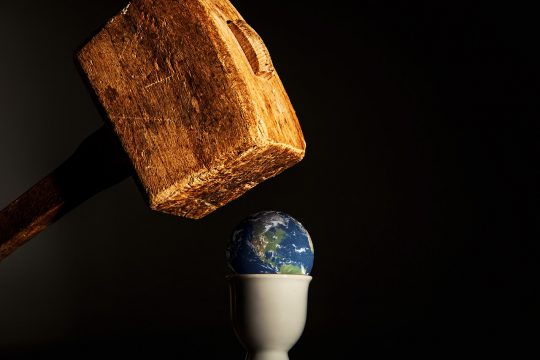 The clock is ticking for humanity, and it is not just because our financial system is heading for the biggest implosion that any of us have ever seen. The truth is that we are literally running out of everything. We will not have enough oil to meet our energy needs long before we get to the end of this century. The lack of fresh water is already a major crisis in many parts of the world. Our air and our soil are more polluted than they have ever been before. And at this point we can barely feed the entire planet, but global demand for food is expected to escalate dramatically in the years ahead. If we continue doing things the way that we have been doing them, a future filled with famine, civil unrest, environmental chaos and war appears to be inevitable. We are literally on the verge of total planetary collapse, but because this is happening in slow-motion most people don’t feel an urgency to do anything about it.
The clock is ticking for humanity, and it is not just because our financial system is heading for the biggest implosion that any of us have ever seen. The truth is that we are literally running out of everything. We will not have enough oil to meet our energy needs long before we get to the end of this century. The lack of fresh water is already a major crisis in many parts of the world. Our air and our soil are more polluted than they have ever been before. And at this point we can barely feed the entire planet, but global demand for food is expected to escalate dramatically in the years ahead. If we continue doing things the way that we have been doing them, a future filled with famine, civil unrest, environmental chaos and war appears to be inevitable. We are literally on the verge of total planetary collapse, but because this is happening in slow-motion most people don’t feel an urgency to do anything about it.
And to a certain extent, the damage has already been done. This week, the WWF released a report which found that the vertebrate population of the world has fallen by an average of 60 percent since 1970. the following comes from NBC News…
The population of the planet’s vertebrates has dropped an average of 60 percent since 1970, according to a report by the WWF conservation organization.
The most striking decline in vertebrate population was in the tropics in South and Central America, with an 89 percent loss compared to 1970. Freshwater species have also significantly fallen — down 83 percent in that period.
You may be thinking that you are not a big fan of the WWF, and I certainly am not either.
…click on the above link to read the rest of the article…
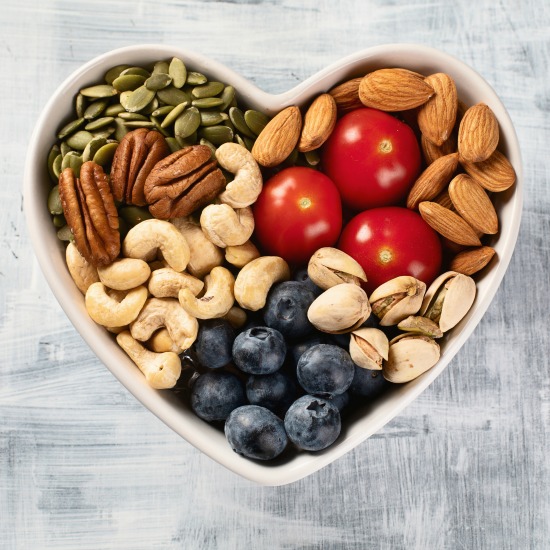
At worst, stress can be a slow killer: It can adversely affect your immune, cardiovascular, neuroendocrine, and central nervous systems, especially when it is experienced chronically.
Avoiding stress entirely is impossible. Many of the ups and downs of everyday life are simply out of our control.
For many, reaching for comfort foods that are high in sugar or refined carbohydrates during times of stress is instinctual. It is an attempt to self-soothe.
Unfortunately, this approach usually makes the problem worse. You feel guilty for eating “junk food”, which causes more stress. The next thing you know, you are trapped in a vicious cycle of stress and overeating.
But there is a bright side – how we respond to stressful situations IS within our control.
There are many ways you can reduce or manage the stress in your life. Good nutrition is one of them. Believe it or not, there are foods you can eat that have shown to have stress-reducing properties.
Cortisol – your body’s stress hormone
Stressful events (even relatively minor ones) can cause cortisol levels to rise to problematic levels.
Cortisol (a steroid hormone) helps fuel the fight-or-flight response – the psychological loop that fires you up to fight or run for your life when facing danger.
Think of it as your body’s built-in alarm system. When you are faced with immediate danger, increases in cortisol help you respond. The hormone works with certain parts of your brain to control your mood, motivation, and fear.
Cortisol also handles other important bodily tasks, explains WebMD:
…click on the above link to read the rest of the article…
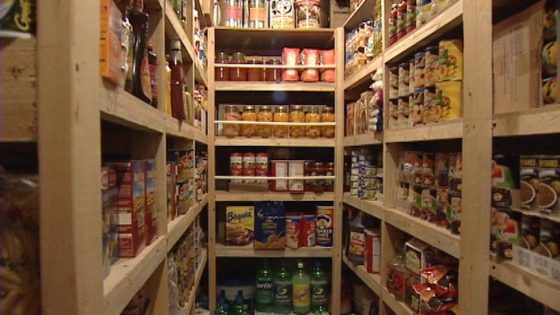
When planning and storing food for emergencies or survival situations, we have long advocated incorporating foods that will last forever (or at least longer than you will). By doing so, this does double duty by boosting your emergency supplies. panties, and your bartering power, as well as ensuring you are purchasing foods as frugally as possible.
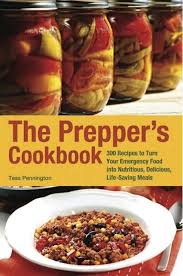 In The Prepper’s Cookbook, 25 must-have foods were explored in this best-selling book. These 25 foods are the foundation of your prepper pantry and used to make an array of foods. 11 of those 25 foods were what is considered “forever foods.”
In The Prepper’s Cookbook, 25 must-have foods were explored in this best-selling book. These 25 foods are the foundation of your prepper pantry and used to make an array of foods. 11 of those 25 foods were what is considered “forever foods.”
Today, we are going to explore five more foods to add to your forever food pantries, and if stored properly, they will last forever. Best of all, many of them will serve multiple purposes beyond human consumption and this could give you a hand up should the SHTF!
5 (More) Forever Foods for Your Prepper Pantry
1. Distilled White Vinegar
Distilled white vinegar is actually not made by distillation at all, but made by the fermentation of the natural sugars found in either grains or fruit. Those sugars are converted to alcohol and the alcohol is then fermented a second time and it turns into vinegar by the production of acetic acid after the fermentation of ethanol, sugars, or acetic acid bacteria. Vinegar typically contains anywhere between 5 and 20% acetic acid by volume and is currently mainly used as a cooking ingredient, or in pickling. The mainstays of the category include white distilled, cider, wine, and malt have now been joined by balsamic, rice, rice wine, raspberry, pineapple, Chardonnay, flavored and seasoned vinegar and more.
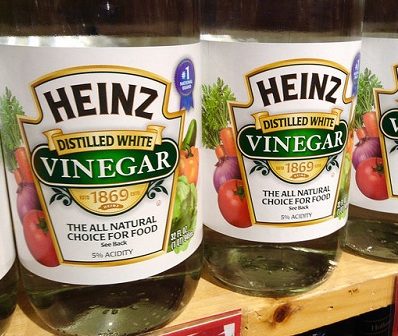
…click on the above link to read the rest of the article…
In 2015, India’s internal intelligence agency wrote a report that depicted various campaigners and groups as working against the national interest. The report singled out environmental activists and NGOs that had been protesting against state-corporate policies. Those largely undemocratic and unconstitutional policies were endangering rivers, forests and local ecologies, destroying and oppressing marginalised communities, entrenching the corporatisation of agriculture and usurping land rights.
These issues are not unique to India. Resistance against similar practices and injustices is happening across the world. And for their efforts, campaigners are being abused, incarcerated and murdered. Whether people are campaigning for the land rights of tribal communities in India or for the rights of peasant farmers in Latin America or are campaigning against the fracking industry in the UK or against pipelines in the US, there is a common thread: non-violent protest to help bring about a more just and environmentally sustainable world.
What is ultimately fuelling the push towards the relentless plunder of land, peoples and the environment is a strident globalised capitalism, euphemistically termed ‘globalisation’, which is underpinned by increasing state surveillance, paramilitary-type law enforcement and a US-backed push towards militarism.
The deregulation of international capital movement (financial liberalisation) effectively turned the world into a free-for-all for global capital. The ramping up of this militarism comes at the back end of a deregulating/pro-privatising neoliberal agenda that has sacked public budgets, depressed wages, expanded credit to consumers and to governments (to sustain spending and consumption) and unbridled financial speculation. In effect, spending on war is in part a desperate attempt to boost a stagnant US economy.
…click on the above link to read the rest of the article…
rganicconsumers.org/
In November 2016, a very concerning report — Glyphosate: Unsafe On Any Plate — was released by The Detox Project and Food Democracy Now!, raising the alarm of the high levels of glyphosate in the US food supply and the (deliberate?) low levels of awareness of its associated health risks.
Soon after its release, we brought Dave Murphy, executive director of Food Democracy Now!, on the podcast to explain the explosive findings within this report on the world’s most-used herbicide (more commonly known by its retail brand: Roundup). We asked: Are we being poisoned in the pursuit of profit?
As happened in past decades with the alcohol and tobacco industries, the glyphosate report added compelling evidence that profits have indeed taken a priority over consumer safety in our food production system — and as public health concerns mounted, Big Ag started circling its wagons and attacking the questioners rather than embracing open scrutiny.
But last month, the tables turned. In a landmark upset ruling, Monsanto’s Roundup weedkiller was ruled to be carcinogenic, and the company’s attempt to hide this fact from consumers made it guilty of acting “with malice or oppression”. Monsanto’s new parent company Bayer was ordered to pay the plaintiff, a former school groundskeeper now dying of non-Hodgkin’s lymphoma, $289 million in damages.
Will this court ruling restrict the use of glyphosate going forward? Or will it be de-fanged upon appeal? What else has been learned about the health impacts of glyphosate in our food since the 2016 report? What is the latest science telling us?
To address these important questions and more, we welcome Dave Murphy back on the program.
…click on the above link to read the rest of the article…
A lot of folks think those Depression Era techniques for stretching food are only for a worst case, SHTF scenario. But in truth, those ideas are good for every day, because the price of food just keeps going up, up, UP. It’s more important now than ever to make your food go further.
The ability to make the food you have feed more people (and leave them feeling full and satisfied) will stand you in good stead if things go horribly wrong. But I think it’s important to do this in the meantime too. If we went back to the ways that our grandmothers made food last during the Great Depression, we could take a big chunk out of our grocery bills, eat more scratch cooking, and stop wasting so much food.
Here are three ways to stretch your food.
Use all your leftovers
One thing that happens a LOT in America is food being thrown in the trash. Up to 40% of our food supply is actually wasted, according to multiple sources. While there isn’t much we can do about food in restaurants or the grocery industry, we don’t have to waste food at home.
That’s where the art of repurposing leftovers comes in handy. Most folks don’t want to eat the same thing over and over again. (Except me – I can eat the same meal for a week straight, and I absolutely love it.) But if you take those leftovers and turn them into something entirely different, then that’s half the battle.
The best thing about using up all your leftovers is that it’s like free food. You are eating the stuff that many people leave in the fridge so long it has to be thrown out. Not you. You’re eating it and loving it.
…click on the above link to read the rest of the article…